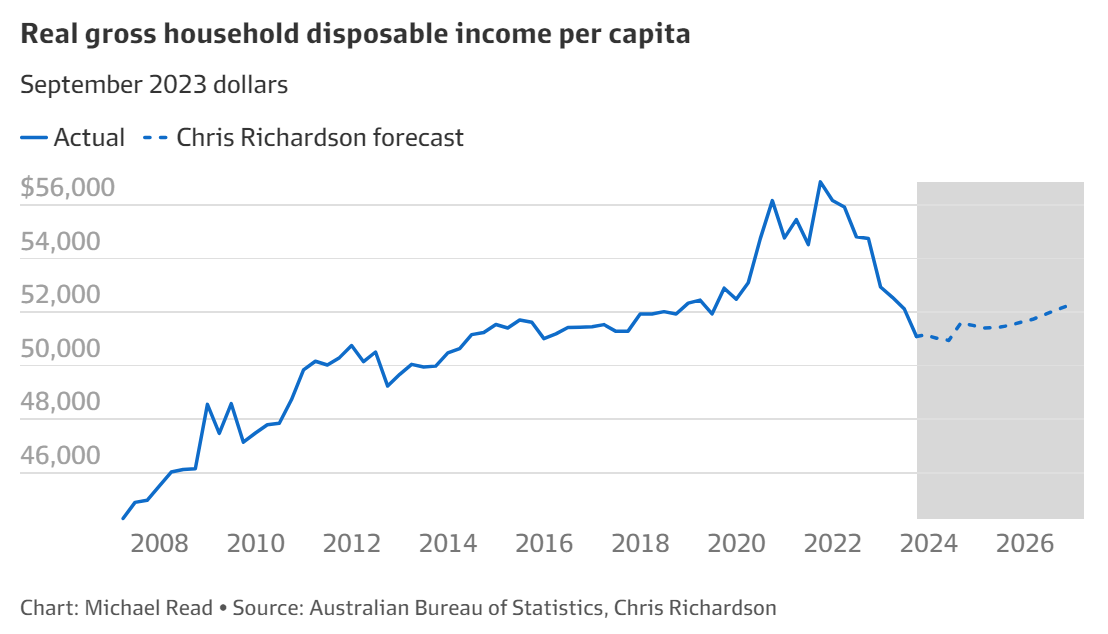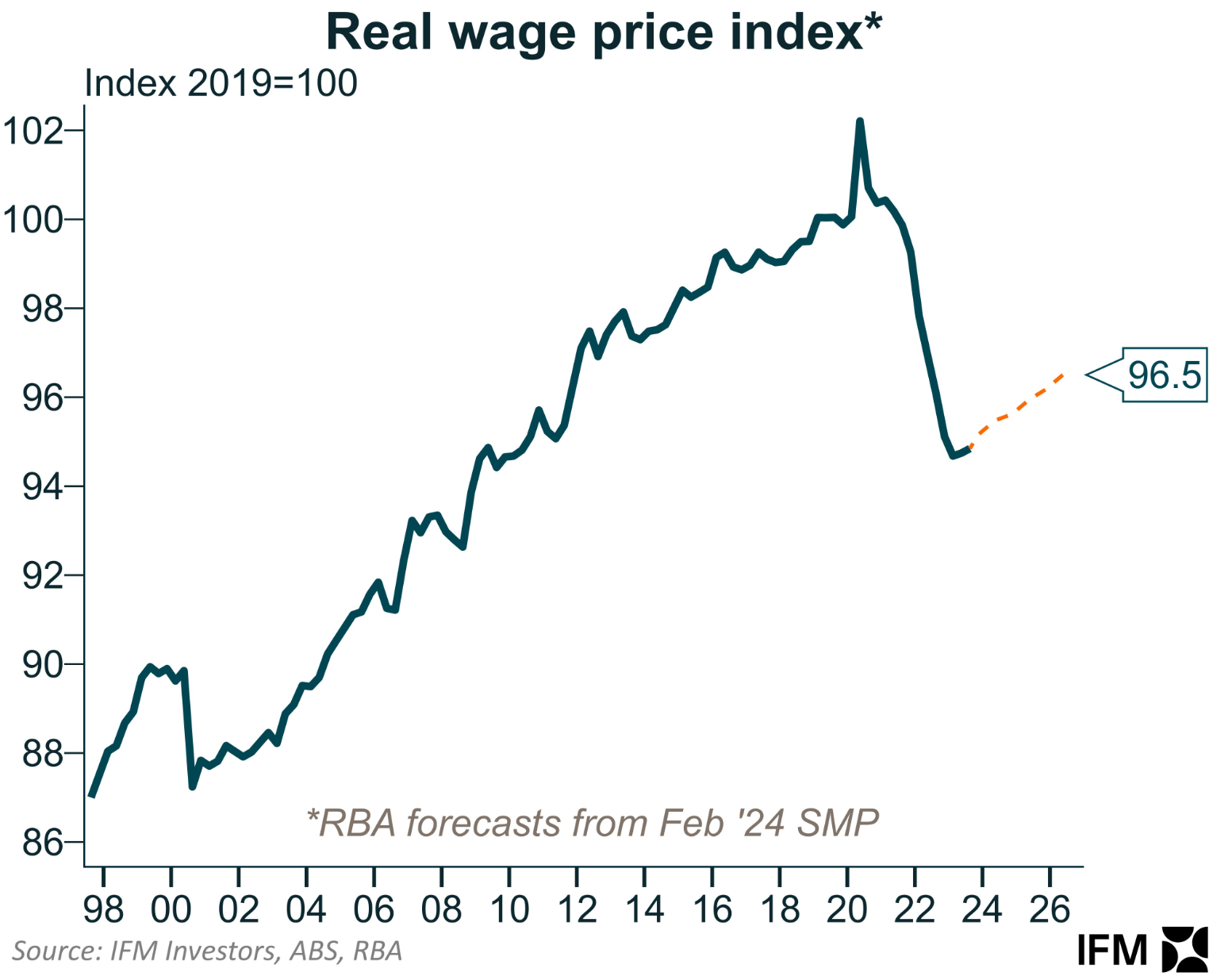It is amazing how a big lie can keep on keeping on in the face of the obvious truth:
Household real incomes are not expected to recover to their pre-pandemic levels until 2027, with new data showing Australia’s prolonged decline in living standards extended into the second half of last year.
…“In Australia these days, we spend our time grabbing bits of pie from each other rather than growing the pie, and at some stage we get what we deserve, and we’re getting the politicians that we deserve,” he said.
Mr Richardson said he did not expect real household incomes to return to their pre-pandemic level until 2027. Mr Smith is more optimistic, forecasting household incomes will recover to their December 2019 level by September 2025.

The below chart from Alex Joiner shows that if Australian wages grow in line with RBA forecasts, then real wages will still be around 3.5% lower in 2026 than they were in 2019:

In short, except for COVID, the standard of living trend has returned to the lost decade trajectory.
Why? Very simple and beautifully explained by Gerard Minack recently:
Australia’s economic performance in the decade before the pandemic was, on many measures, the worst in 60 years. Per capita GDP growth was low, productivity growth tepid, real wages were stagnant, and housing increasingly unaffordable. There were many reasons for the mess, but the most important was a giant capital-to-labour switch: Australia relied on increasing labour supply, rather than increasing investment, to drive growth. Remarkably, the country now seems to be doubling down on the same strategy.
Australia has been in an extended low-growth rut for almost 20 years. Decade average per capita GDP growth has been around 1% since 2014, the worst performance since the early 1950s (Exhibit 1). (The weakness in the early 1950s was partly because the war boom dropped out of the data while the post-war demobilisation-driven decline remained in.)

Weakness in per capita GDP has been matched by poor household income growth and poor labour pay. Incomes popped in the pandemic but are now below the weak pre-pandemic trend (Exhibit 2).

This is an incontrovertible fact. Mass immigration is making most Australians poorer and will continue to do so in the absence of some magical external sector boom.
But the kicker is this.
Owing to the unbearable truth about mass immigration being occupied politically by One Nation and Pauline Hanson, nobody in Canberra will touch it.
Green Left Weekly in 1998, fears of being associated with Pauline Hanson’s “racist” and “xenophobic” views caused The Greens to abandon their policy of “stabilising” Australia’s population and “a zero net migration policy” to opposing cuts to immigration.
The Green’s immigration stance has since shifted to advocating higher levels of immigration, which has annihilated their credibility on the environment.
Had that decision never been made, The Greens would have doubled their vote today and be on the verge of supplanting the ALP as the second major party in Australia.
In conclusion, most Australians will be made poorer, the economy weaker, our ecology ruined in perpetuity, and the corrupt political duopoly entrenched to avoid agreement with one fish and chip shop bogan.
What kind of mad country is this?

